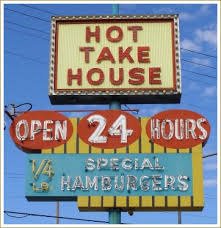Physical Address
304 North Cardinal St.
Dorchester Center, MA 02124
Physical Address
304 North Cardinal St.
Dorchester Center, MA 02124

Delete all Seattle's highways. Invent new neighborhoods. Explain macroeconomic trends with home size. Money flows uphill to water. Do NIMBYs really hate density? Urban economics is on a tear.

The benefit-cost ratio of housing supply subsidies looks terrible. And the state of research is even worse.
Progressives often argue that American cities should imitate Vienna’s 1920s strategy of building enormous amounts of public housing while controlling rents paid to private landlords. But a look at the birth of Vienna’s public housing system shows why that system is not easily replicated. A book supported by the city government points out that the city had an enormous housing shortage after World War I, and that the working classes “began reclaiming the land surrounding the cities” (p. 13). The city then “offered its support in the form of the redesignation and purchase of sites”. Settlers received housing in return for committing to work on the building site (id.) Obviously, this strategy cannot be replicated today; there is not a huge amount of unowned or extremely cheap land that people can just commandeer and build on, and I am not sure many people can easily become construction workers in exchange for housing. In addition, the city financed housing in ways that are not easily replicated today. The book notes that tax revenue for housing came from a 1923 “tax on housing development .. a simple working-class apartment was taxed at an average annual rate of 2.083% of its pre-war rentable value, this went up to 36.4 for luxury homes.” This might have worked in 1923 because city residents had no suburbs to flee to; however, today, city residents can easily respond to large tax increases by moving. Moreover, in 1923 there was no zoning or environmental review or “community engagement” to give Not In My Back Yard (NIMBY) activists a chance to delay or prevent housing construction. Today, even if government can afford to build new housing somewhere, the bureaucratic obstacles to such housing might made it politically impossible to build in some places, or expensive and time-consuming to build […]

One alternative to market urbanism that has received a decent amount of press coverage is the PHIMBY (Public Housing In My Back Yard) movement. PHIMBYs (or at least the most extreme PHIMBYs) believe that market-rate housing fails to reduce housing costs and may even lead to gentrification and displacement. Their alternative is to build massive amounts of public housing. On the positive side, PHIMBYism, if implemented, would increase the housing supply and lower housing costs, especially for the poor who would be served by new public housing. And because there is certainly ample consumer demand for new housing, PHIMBYism would be more responsive to consumer preferences than the zoning status quo (which privileges the interests of owners of existing homes over those of renters and would-be future homeowners). But PHIMBYism is even more politically impossible than market urbanism. Market urbanists just want to eliminate zoning codes that prevent new housing from being built- a heavy lift in the political environment of recent decades. But PHIMBYs want to override the same zoning codes, AND find the land for new public housing (which often will require liberal use of eminent domain by local governments), AND find the taxpayer money to build that new public housing, AND find the taxpayer money to maintain that housing forever. And to make matters worse, the old leftist remedy of raising taxes on the rich might be inadequate to fund enough housing, because the same progressives who are willing to spend more money on housing also want to spend more public money on a wide variety of other priorities, thus making it difficult to find the money for housing.
A pure libertarian might argue that in an ideal world, there’d be no need for government-subsidized housing for low- and moderate-income households. Nevertheless, it seems to me that in the world we actually live in, even people generally opposed to the welfare state should favor more such housing. This is so for several reasons. First, government raises the cost of housing through a wide variety of regulations- some justified (e.g. building codes necessary for safety), some not-so-justified (e.g. exclusionary zoning). These regulations, by raising the cost of housing, effectively take money from all households. And because these restrictions aren’t based on ability to pay, they are especially painful for low-income households. Public housing and similar programs, rather than being a subsidy to the undeserving poor, are merely compensation for this act of plunder. Second, even if the United States abolished zoning tomorrow, it might take decades for housing supply to increase enough to bring rents down. So in the interim, lower-income households would still be suffering from the effects of zoning, and would deserve compensation just as much as they do under the status quo. Third, even if the United States abolished zoning and similar restrictions tomorrow, public health and safety might support certain restrictions that nevertheless increase the cost of housing- for example, some basic safety protections in building codes. It seems to me that as a matter of justice, government should not be forcing people into homelessness, so government should subsidize housing in order to make up for the costs imposed by even the most legitimate regulations. Finally, even if there were no housing-related regulations at all, the cost of land would create a floor under housing costs, which means some people would be homeless without government support. So if homelessness creates harmful social externalities of any kind, […]
1. Miller-McCune (what a bad name for a magazine) has an article about a possible VMT tax, and points out that more fuel-efficient vehicles will lead to less gas tax revenue. 2. Streetsblog has an extremely unflattering profile of Republican nominee for NY Governor Carl Paladino. He made a name for himself politically by detolling a major highway near where he was a real estate developer, and has continued to oppose new tolling projects throughout the state. He’s promising to cut the gas tax rate, and apparently once said, “It’s time we started looking at parking as a public service.” I should note that his Democratic opponent Andrew Cuomo ain’t no slouch when it comes to encouraging sprawl – Wayne Barrett at the Village Voice fingered his tenure as HUD Secretary as one of the “starting points for the mortgage meltdown.” 3. Paul Barter at Reinventing Parking has a guest post about parking reform in Bogotá that was concurrent with their much-vaunted TransMilenio BRT system, and he promises us more about it in the future. 4. Quoteth the Los Angeles Times: “At least 120 municipalities [in California] — nearly one in three with active redevelopment agencies — spent a combined $700 million in housing funds from 2000 to 2008 without constructing a single new unit, the newspaper’s analysis of state data shows. Nor did most of them add to the housing stock by rehabilitating existing units.” 5. Vancouver learns the hard way that luxury public housing is a bad idea. You could call it inclusionary zoning at its finest.
Links, links, links! 1. The Washington City Paper has a great expose on street food in DC called “Inside D.C.’s Food-Truck Wars” with the subtitle “How some of Washington’s most powerful interests are trying to curb the city’s most popular new cuisine.” 2. Mary Newsom at the Charlotte Observer thinks it’s a bad thing that Charlotte allowed so much density around its wildly popular new light rail line because it’s driving up property values. The Overhead Wire says that this is natural when land is scarce, and that “if you built all the [proposed] lines at once, that pressure gets relieved five or six ways instead of one way.” This is to some extent true, but another solution to the scarcity of transit-oriented property is to allow more even development around the existing line by loosening zoning and parking rules. 3. Ryan Avent finds research that finds that congestion pricing in Stockholm, where citizens voted on the plan after a seven-month test period, became more popular after they experienced it. Then again, congestion pricing in New York and elsewhere depends not only on people living in the city, but also people living outside of it, who are much less likely to warm up to it. Also, it looks like Stockholm expanded transit (mostly bus) service along with congestion pricing. 4. The pilot private van initiative in NYC that we discussed earlier has been floundering, and Cap’n Transit has been all over it. Literally every post on the front page of his blog is about it. There seem to be many reasons for the vans’ failure, and I might write something on it in the future, but in the meantime read Cap’n Transit if you’re interested. 5. Philadelphia Inquirer architecture critic Inga Saffron praises recently-fired Philadelphia Housing Authority boss Carl Greene’s […]